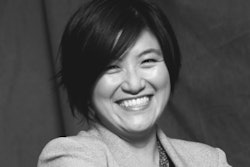It’s Asian American Pacific Islander Heritage Month, but the first week in May will always and forever commemorate the death of my cousin Stephen Guillermo, a 26-year-old senior at San Francisco State University in 2014.
SF State and other state schools around California and the nation were made for students like Stephen. An immigrant from the Philippines, he worked his way into the American educational system. But then after high school, his father died of cancer. As the oldest son, Stephen took it on himself to provide for his mother and siblings. He worked full-time supporting the family. It put him on the 8-year plan for college. SF State accommodated him well.
With weeks before his graduating, the celebration was beginning. After a night on the town, he got back to his apartment building in the South of Market where he was gunned down.
 Emil Guillermo
Emil GuillermoRight building, wrong apartment. Enter at your peril if a gunman is on the other side. In California’s perverse version of “Stand Your Ground,” you get a free shot if an intruder crosses your threshold.
A single shot got Stephen for life. His killer spent three nights in jail and was let go.
The DA, a Democrat, didn’t want to test the law. Or the NRA. So a poor person gets shot by another poor person. No harm no foul.
Would it be different if it were in a posh section of San Francisco among scions of a wealthy family?
I’d hope not.
But I sense, I’d probably be wrong.
The experience has elevated me and my family to a lofty position among all Americans.
Whenever I see gun violence in the news, I can’t just ignore it like others.
My family and I know this reality of American life all too well.
We feel for the victims.
It’s worse when it’s in a school like it was last week at UNC-Charlotte.
I heard about it first on Twitter, of course. When it’s not enabling our Prevaricator-In-Chief (10,000 lies or misleading since taking office, according to The Washington Post), Twitter does let people know when things happen immediately. The AP tweeted: “Breaking: shots reported at University of North Carolina’s Charlotte campus. School on lockdown. 2 dead. 4 injured.”
The replies from the public updated the reality on my feed.
Nina Espina tweeted. “3 hurt, assailant in custody. My son is a senior at UNCC — texted me he was safe. Today a university, tomorrow an elementary, middle school or high school. How many lives must be sacrificed for reasonable gun reform to happen? Is there a number the GOP will accept?”
Another person on the feed, tweeted an image, a drawing of what I’d call the cycle of gun violence.
Perhaps you’ve seen it? Starts with “mass shooting” at the top of the circle, moves around the circle to “thoughts and prayers,” then “Facebook debates,” then “Everyone forgets,” then moves to “Congress does nothing,” on to “Crickets chirping,” and then goes full circle to the next “mass shooting.”
Note it has to be a mass shooting these days. Anything less isn’t worth lifting a finger in today’s America.
Even the small numbers at UNCC didn’t seem to move people like it should. At the SF State campus, no one mentioned it to me. That wasn’t like the week of the Parkland shootings last year. That year, campus cops came in to give everyone barricading lessons.
I talked about the UNCC story in class, and as I did, I noticed the door was open. For a second, thought to shut it. But I didn’t at first. I’m not scared, I said to myself.
But then I walked across the room and shut the door.
I don’t know if I’ll ever teach again. I’m an adjunct. On call. Need an adjunct? Call me.
But one thing I learned is that a school has a responsibility to its students. And if it doesn’t, then it’s up to the person in front to show it.
I care for my students. And it extends to more than the curriculum. If they’re not well, are they getting medical treatment? Are they feeling down and not just because of the final exam — do they need mental health services?
You can say those issues are not an adjunct’s problem. But if the issues aren’t address, no learning can take place. Class is a dead zone.
At a very basic level, we should worry about our students and worry about safety. Do students feel safe enough to learn? Do I feel safe enough to teach?
The experience at UNC-Charlotte should make us all think about this much harder than we do. And please don’t mention letting guns on campus. That’s no answer. The Charlotte case is another opportunity to break the trap of our cycle of gun violence.
But perhaps I’m hypersensitive because the emptiness and sense of loss is too real.
I know gun violence.
Emil Guillermo is a journalist and commentator, and an adjunct professor of journalism at San Francisco State University. He writes for the Asian American Legal Defense and Education Fund. You can follow him on Twitter @emilamok.



















